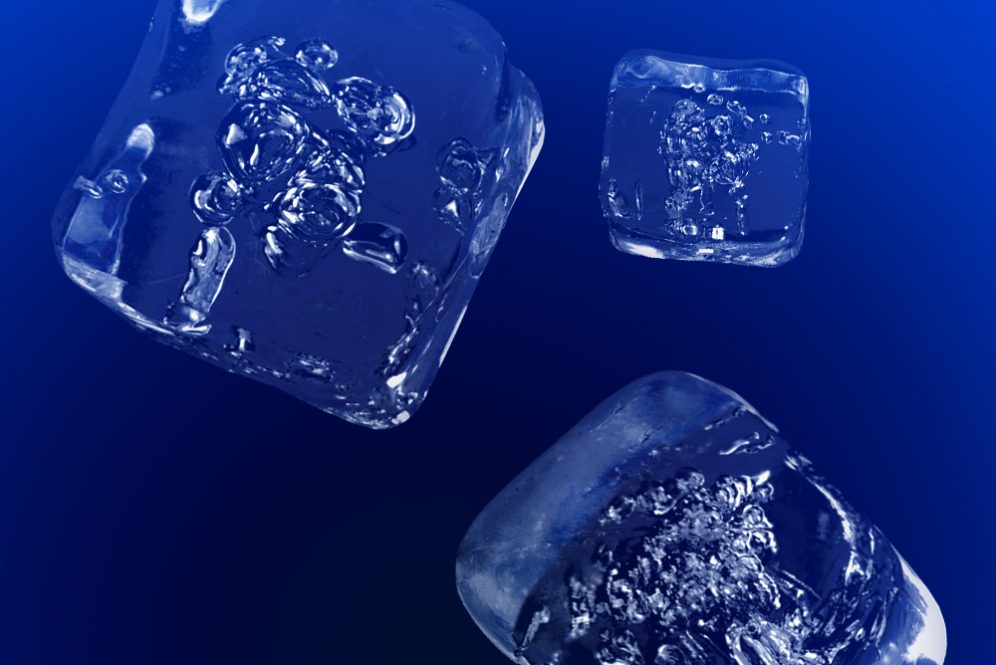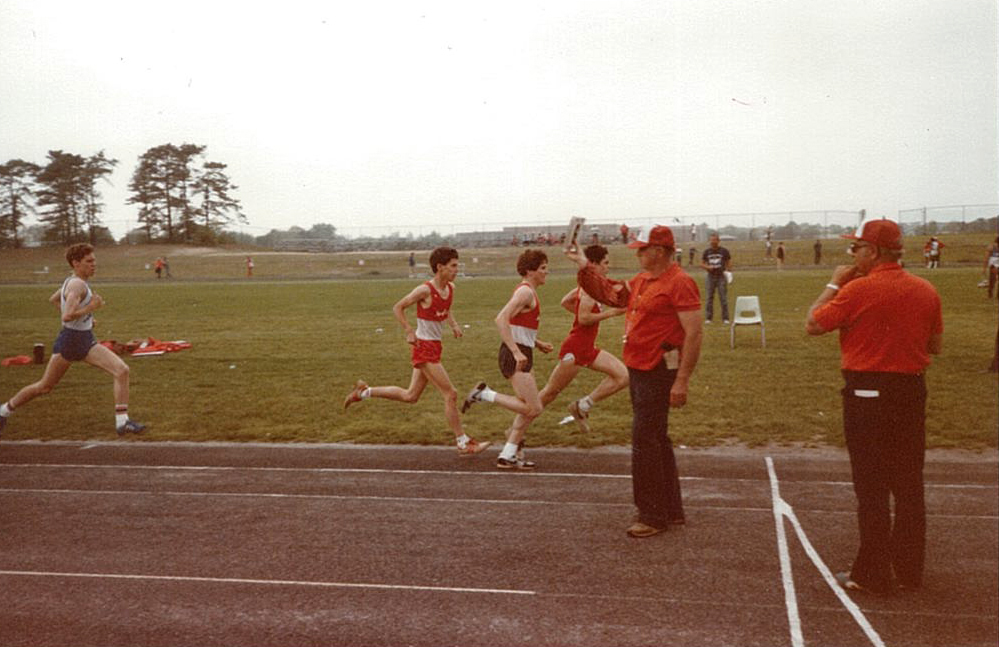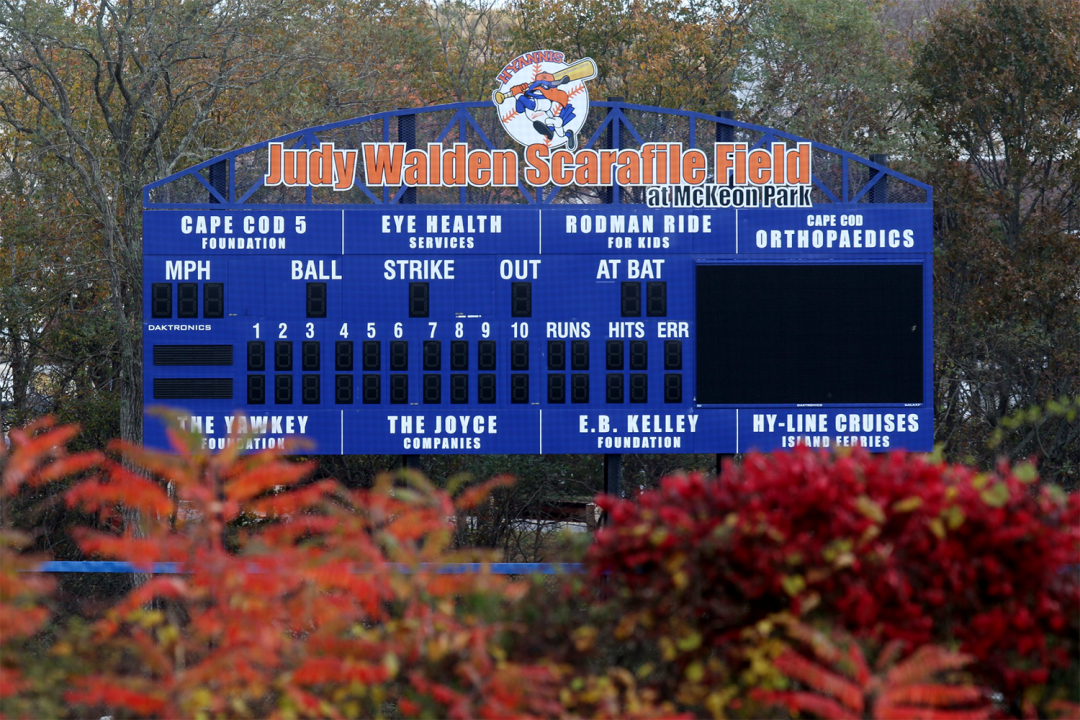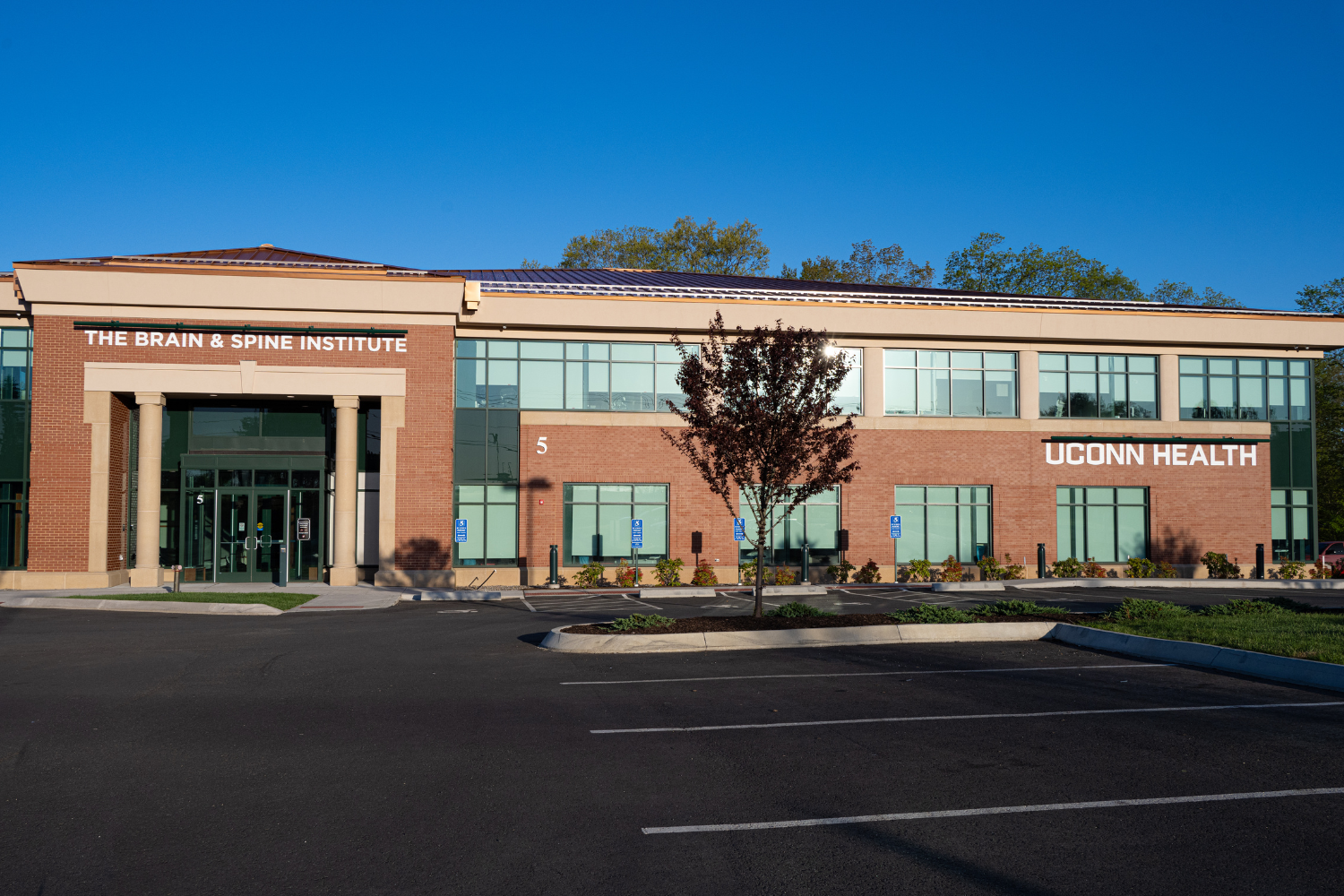With half a lap left in the 10k race, Douglas Casa collapsed.
The 16-year-old had dreamed of competing in New York’s Empire State Games since he was 12. He made the cut that June, finishing in the top two of his qualifying event, and then trained for weeks with fellow elite runners on Long Island. And on the day of the race, August 8, 1985, during a heat wave with the midday sun beating down on the track in Buffalo, Casa went down.
“I was running the best race I’d probably run in my life at that point. I was competing for a third-place position and collapsed with 200 meters to go,” Casa recalls. “I got up, ran the turn, and collapsed with 80 meters to go.”
An athletic trainer working at the event recognized quickly that Casa was suffering from exertional heat stroke and began cooling Casa immediately. When Casa arrived at the hospital, the emergency room doctor was familiar with the condition as well and put the unconscious runner into a cold-water immersion tub, which was not a standard protocol in 1985.
After being transferred out of the intensive care unit, Casa awoke that evening in his hospital room to see a story about his collapse on the local news — and soon decided on his life’s purpose.
“The benefit of having a near-death experience as a 16-year-old is I never had to worry about what my job or my career was going to be,” says Casa, UConn Board of Trustees Distinguished Professor of Kinesiology. “I knew literally within a couple days of that taking place that I wanted to pursue this area of study.”
Doug Casa, in third place, runs in a 1984 high school track meet. (Courtesy of Doug Casa)
High school sophomore Doug Casa (fourth runner) runs in a high school track meet in 1984. (Courtesy of Doug Casa)
Life’s Work
Today, 40 years after suffering that exertional heat stroke, Casa leads a team of 30 staff and 70 undergraduate student volunteers as chief executive officer of the Korey Stringer Institute (KSI) in UConn’s College of Agriculture, Health and Natural Resources. The renowned institute’s wide-ranging work serves to keep athletes, soldiers, and laborers safe in the heat.

“Every single day, I’m trying to figure out what can we learn about the prevention, recognition, and treatment of exertional heat stroke,” says Casa. “Can we prevent families having to suffer tragedies of their kids dying from a heat stroke, or a spouse losing a loved one who is a laborer or war fighter who suffers a heat stroke or struggles in the heat?”
Most times when a person exercises, they undergo what’s called exercise-induced hyperthermia — their body temperature increases, sometimes to as high as 104 degrees Fahrenheit. Typically, the temperature plateaus, and the person loses about as much heat as their body creates.
Sometimes, though, especially when it’s extra hot or humid, a person’s temperature doesn’t stabilize, and the temperature keeps climbing, sometimes as high as 109 degrees. The most extreme hyperthermia that can occur during physical activity is exertional heat stroke (EHS), among the top three causes of death in America for athletes, for laborers, and for warfighters undergoing training.
Today, 40 years after suffering that exertional heat stroke, Casa leads a team of 30 staff and 70 undergraduate student volunteers as chief executive officer of the Korey Stringer Institute (KSI) in UConn’s College of Agriculture, Health and Natural Resources. The renowned institute’s wide-ranging work serves to keep athletes, soldiers, and laborers safe in the heat.
“Every single day, I’m trying to figure out what can we learn about the prevention, recognition, and treatment of heat stroke,” says Casa. “Can we prevent families having to suffer tragedies of their kids dying from a heat stroke, or a spouse losing a loved one who is a laborer or war fighter who suffers a heat stroke or struggles in the heat?”
Most times when a person exercises, they undergo what’s called exercise-induced hyperthermia — their body temperature increases, sometimes to as high as 102 or 103 degrees Fahrenheit. Typically, the temperature plateaus, and the person loses about as much heat as their body is creating.

Sometimes, though, especially when it’s extra hot or humid, a person’s temperature doesn’t stabilize, and the temperature keeps climbing, sometimes as high as 109 degrees. The most extreme hyperthermia that can occur during physical activity is exertional heat stroke, among the top three causes of death in America for athletes, for laborers, and for warfighters undergoing training.
If a person’s body temperature remains higher than 104 for more than 30 minutes, they may suffer lasting damage or even die. But quick recognition and simple steps such as taking an accurate temperature and putting the person into an ice bath until they are sufficiently cooled make all the difference.
“If you can get their temperature under 104 within 30 minutes of presentation, the evidence has shown that survivability is 100%, and it seems like they don’t have any long-term or permanent complications from the condition,” says Casa, who has been involved with the successful care of more than 420 EHS patients over the last 32 years. In one case, an athlete’s temperature was 112.8, and he emerged from aggressive cooling just fine.
“That data has shaped our policy work, because we need to enforce and encourage the concept of ‘cool first, transport second.’”
KSI pushes for protocols and policies that increase the odds of recovery for an athlete suffering heat stroke. Having a licensed athletic trainer, a rectal thermometer, and a $150 tub filled with water and ice at sporting events are among the relatively simple and inexpensive things that can save a life.
Today, every NFL team and nearly every high school and college football team has a cold-water immersion tub beside the field, says Casa. “That’s the kind of progress we’ve made at KSI over the last 15 years. We’ve changed the landscape of that acute care for exertional heat stroke to really optimize the chance that they will have a good outcome.”
But the work is far from over, and prevention education has been just as important as treatment protocols. Heat strokes keep happening, primarily, Casa says, because coaches don’t tailor their workouts to individuals, especially in the case of football linemen. More than 70 high school athletes have died from heat stroke since the 1982-1983 school year, according to KSI data, and rates have remained stable despite better evidence and knowledge of how to prevent the condition and treat patients when it happens.
Moving Forward Faster
After earning an undergraduate degree in biology from Allegheny College in 1990 and a master’s in athletic training from the University of Florida in 1993, Casa landed at UConn to pursue his doctorate in exercise physiology, graduating in 1997. In 2001, an all-pro offensive lineman named Korey Stringer died from heat stroke complications during Minnesota Vikings training camp, and Casa, then a professor, was called upon as an expert witness in the ensuing lawsuits.
While Casa credits the medical professionals around him in 1985 with saving his life, Stringer did not receive the same quality of care. Stringer and his teammates started preseason training camp on July 30, 2001, with two-a-day practices wearing full gear during some of the hottest days in Minnesota history.

Above: Kelci Stringer
Stringer was unable to complete the first day of practice, and on day two, at the end of morning practice, Stringer suffered exertional heat stroke. No aggressive cooling methods were applied, and Stringer’s temperature was over 108 degrees when he arrived at the hospital 90 minutes after onset. He died early the next morning.
Stringer’s widow, his agent, and the NFL wanted to prevent others from suffering the way Stringer did, and in April 2010 the Korey Stringer Institute launched with three staffers, including Casa at the helm. Since then, the KSI team has saved countless lives with its research, education, advocacy, and outreach efforts.
“I had already established the passion and the knowledge. When Kelci Stringer and NFL Commissioner Roger Goodell asked me in 2009 to establish this legacy for Korey at UConn, we were honored and excited to have this incredible opportunity,” says Casa. “We already had the foundation and the infrastructure here due to years of research in this field, but the infusion of support to form KSI allowed us to really amplify what we were doing and move forward faster.”
With generous support from corporate sponsors and a variety of grants, KSI attacks its mission of preventing sudden death and optimizing performance from every angle, in state-of-the-art heat labs in Storrs, Connecticut; legislative buildings across the country; and massive sports arenas around the world.
Research studies evaluate wearable technologies, cooling textiles, hydration solutions, and other ways to combat heat-related illness. Outreach projects advocate for and track the existence of athletic training services at secondary schools throughout the country, push states to adopt best-practice policies that are shown to save lives and prevent catastrophic injury in high school athletes, and advise employers on heat-safety standards, among other initiatives.
And with the National Center for Catastrophic Sport Injury Research, a project that originated at University of North Carolina over four decades ago and now includes UConn and the University of Washington, KSI investigates the circumstances of every exertional injury and death in middle school, high school, college, and professional sport, tracking the data and shaping policies to prevent it from happening again.
What’s Next
The institute provides consultation to athletics governing bodies including the NCAA, the NFL, and World Athletics; the U.S. Air Force and the U.S. Army; nearly every state high school athletic association in the country; and companies including Delta Air Lines and UPS.
The Delta and UPS partnerships reflect KSI’s recent expanded focus on laborers. KSI has helped them develop employee education programs and overhaul policies to keep workers safe and optimize productivity.
This fall, KSI opened a dedicated heat lab that mimics conditions that hundreds of millions of workers encounter every day on our planet. And in the spring of 2026, KSI is opening a satellite laboratory at the University of North Florida in partnership with Perry Weather, a weather technology company. This expansion connects KSI with additional companies and populations working in extreme heat conditions year-round.
Laborers differ from soldiers and athletes, Casa says, because they skew older and might have medical conditions and take medications that make it harder to be in the heat working on farms, in factories, or in construction.
“They have 10- or 12-hour workdays versus a two- or three-hour practice. The stresses for a laborer, the unique things they bring to the table as an individual, and the structure of their workday is unique, and it requires a lot of attention and a lot more research than we currently have,” says Casa.
Unlike that day in 1985, there is no finish line to the race Casa runs today. As he has done for the 15 years since KSI’s founding and in the decades prior, Casa will continue to work tirelessly to ensure the safety of more people.
“KSI is looked to as a leader, nationally and internationally, related to providing safe work and sport environments,” Casa says. “We’re creating a hub of knowledge in these topic areas of exercise in the heat, medical care related to these emergencies, and preparedness for emergencies.
“I feel super fortunate that in the 40 years since I had my exertional heat stroke, I’ve been able to translate that experience to positive outcomes to influence millions of people and allow them to be safer doing their job or sport in the heat.”
Big ideas come from out of the blue.
Behind every breakthrough, there’s a story of creativity and commitment. One where individuals come together, fueled by a shared vision and sustained by imagination and persistence.





